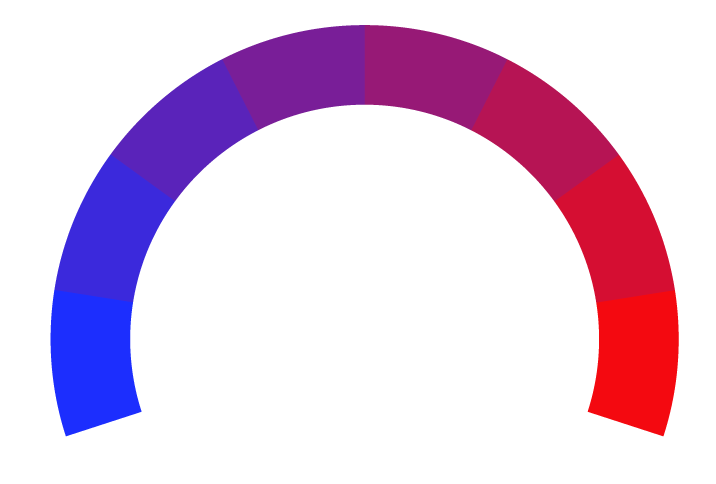Global Trade Future in an AI-Driven Economy for NASDAQ:AMZN by GlobalWolfStreet
- Bias Rating
- Reliability
N/AN/A
- Policy Leaning
-94% Very Left
- Politician Portrayal
N/A
Continue For Free
Create your free account to see the in-depth bias analytics and more.
By creating an account, you agree to our Terms and Privacy Policy, and subscribe to email updates.
Bias Score Analysis
The A.I. bias rating includes policy and politician portrayal leanings based on the author’s tone found in the article using machine learning. Bias scores are on a scale of -100% to 100% with higher negative scores being more liberal and higher positive scores being more conservative, and 0% being neutral.
Sentiments
23% Positive
- Liberal
| Sentence | Sentiment | Bias |
|---|---|---|
Unlock this feature by upgrading to the Pro plan. | ||
Reliability Score Analysis
Policy Leaning Analysis
Politician Portrayal Analysis
Bias Meter
Extremely
Liberal
Very
Liberal
Moderately
Liberal
Somewhat Liberal
Center
Somewhat Conservative
Moderately
Conservative
Very
Conservative
Extremely
Conservative
-100%
Liberal
100%
Conservative

Contributing sentiments towards policy:
69% : c. Predictive Border Management: By analyzing real-time trade data, AI helps governments identify illegal shipments, potential smuggling activities, and compliance violations.62% : Countries that invest heavily in AI infrastructure, research, and data capabilities will gain a competitive edge.
62% : Cyberattacks or digital infrastructure failures could disrupt global trade operations. 8.
60% : This minimizes delays, reduces corruption, and enhances trade transparency.
58% : d. Sustainability and Carbon Tracking: AI tools are helping companies monitor carbon emissions in their supply chains, promoting greener logistics.
57% : AI-Driven Supply Chain Transformation The backbone of global trade lies in efficient supply chain networks.
55% : Over centuries, innovations such as the steam engine, telecommunication, and the internet have reshaped how nations trade.
54% : By modeling potential disruptions, governments can take preventive measures to stabilize their economies. 5.
54% : This ensures national security while keeping legitimate trade unhindered. 6.
53% : This aligns with the global shift toward sustainable trade practices, as nations increasingly link environmental responsibility with trade policy. 3.
52% : With AI, businesses and governments can make real-time data-driven decisions, improving the flow of goods and reducing costs.
52% : Global Competitiveness in the AI-Driven Economy The integration of AI into global trade will inevitably reshape global economic hierarchies.
52% : As AI continues to permeate every aspect of economic activity -- from production and logistics to finance and governance -- it is redefining how nations interact and compete.
51% : However, these networks are often complex, involving multiple countries, regulations, and logistical challenges.
51% : AI-Powered Trade Policy and Economic Forecasting Governments and international organizations rely on accurate data to formulate trade policies and economic strategies.
49% : The integration of AI into international trade will not only boost efficiency and transparency but also shift the balance of economic power among nations. 1.
48% : Nations that dominate AI technology will have significant leverage in international negotiations, similar to how oil-rich nations influenced trade in the 20th century. 7.
47% : Moreover, AI can support policymakers in negotiating trade agreements by simulating various economic scenarios and predicting the impact of tariffs, quotas, or sanctions.
46% : Governments must focus on upskilling and reskilling programs to manage this transition.
45% : For instance, AI-powered trade analytics help governments and corporations identify emerging market opportunities, detect trade anomalies, and optimize export-import operations.
45% : Furthermore, AI-driven economic models assist in predicting the impact of global crises -- such as pandemics or conflicts -- on international trade.
45% : c. Data-Driven Trade Governance: Trade organizations like the World Trade Organization (WTO) and regional trade blocs will increasingly rely on AI for policy modeling, compliance monitoring, and dispute resolution.
45% : Ultimately, the future of global trade in an AI-driven economy will depend on how humanity harnesses this technology -- not just for profit, but for sustainable, fair, and inclusive global prosperity.
43% : Future Outlook: AI and the Next Generation of Global Trade The future of global trade in an AI-driven economy is promising yet complex.
42% : Transparent and standardized AI governance frameworks are needed to maintain fairness in international trade.
40% : The Role of AI in Reshaping Global Trade Dynamics AI is reshaping the foundation of global trade through its ability to analyze massive datasets, identify patterns, and make autonomous decisions.
39% : However, this transformation demands responsible governance, international cooperation, and equitable access to technology.
38% : AI is now transforming international trade finance by improving transparency, reducing fraud, and enhancing financial inclusion.
38% : c. Blockchain and AI Integration: When combined with blockchain, AI can enhance transparency in trade finance by verifying document authenticity and automating smart contracts.
37% : This strengthens the integrity of international trade finance systems.
36% : From predictive analytics that forecast market demand to intelligent automation that optimizes logistics and customs operations, AI is revolutionizing global trade in unprecedented ways.
36% : The Rise of Smart Ports and Digital Customs The logistics and customs sectors are crucial in facilitating international trade.
34% : Conclusion The rise of Artificial Intelligence marks the beginning of a new era for global trade.
31% : Ensuring data security and compliance with international privacy laws remains a major challenge.
*Our bias meter rating uses data science including sentiment analysis, machine learning and our proprietary algorithm for determining biases in news articles. Bias scores are on a scale of -100% to 100% with higher negative scores being more liberal and higher positive scores being more conservative, and 0% being neutral. The rating is an independent analysis and is not affiliated nor sponsored by the news source or any other organization.





















